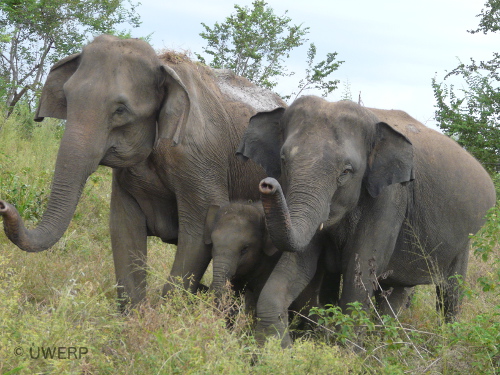Basics
The Asian Elephant (Elephas maximus) is the only living species of the genus Elephas and is distributed throughout Asia from India in the west to Borneo in the east. All Asian elephants are currently classified as a single species, although there are several subspecies. The largest populations exist on the mainland, sometimes referred to as E. m. indicus. The population on the island of Sri Lanka is referred to as E. m. maximus, and represents the original “type” specimen for the species. Genetically it is very similar to the mainland population. The Bornean and Sumatran populations are designated as subspecies E. m. borneensis and E. m. sumatranus respectively. The elephants of Sumatra may be especially unique, having diverged earlier from all other populations and possessing an extra pair of ribs.
Asian elephants are smaller than their African savannah relatives and have many other physical features that distinguish them. The ears are smaller and the back is more rounded so that the crown of the head is the highest point of the body. The trunk tip has just one ‘finger’ rather than two. Females are referred to as ‘cows’ males are referred to as ‘bulls’ and immature animals are known as ‘calves’. Females do not have tusks, while males may or may not exhibit tusks. Both sexes can instead have miniaturized incisors, which are referred to as ‘tushes’ which they use to peel bark off trees.
Asian elephants can live as many as 80 years in captivity, and in some wild populations may live 60 years or more. Females have a gestation time of 20-22 months, which means they reproduce slowly. Optimally, females can have a calf every 3-4 years, but more typically it may take 6 years or more [read more].
Elephants are an integral part of cultures throughout Asia, serving both in religious symbolism as well as day-to-day labor for more than 5000 years! That’s a time span comparable to when horses were first domesticated. But unlike horses, Asian elephants have never truly been “domesticated,” in the sense that they have not been bred in captivity over multiple generations by humans to serve our needs.

